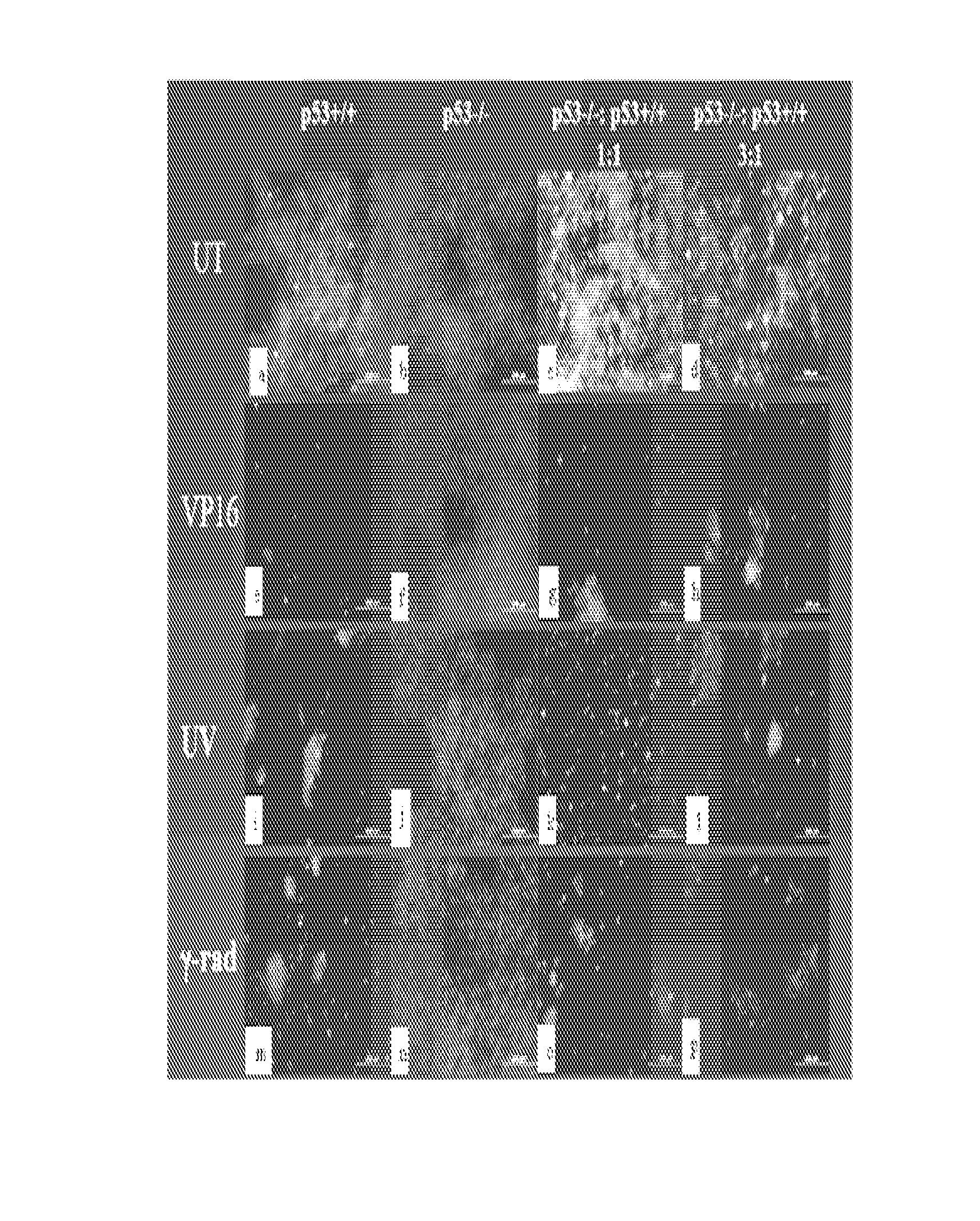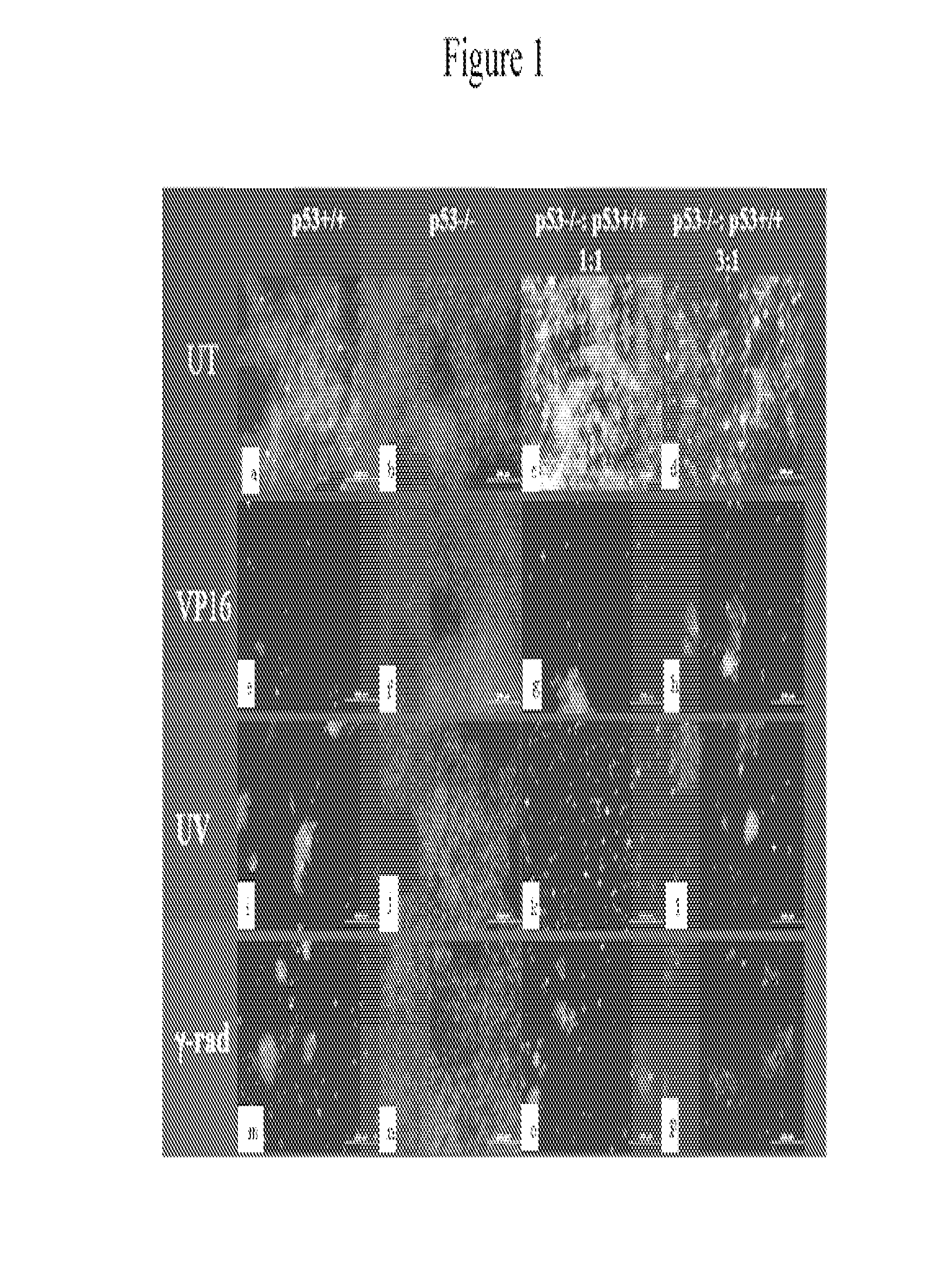Use of Soluble Galectin-3 (Gal-3) for Cancer Treatment
a cancer treatment and galectin technology, applied in the field of cancer treatment using galectin3 (gal3), can solve the problems of unanswered questions about the control of apoptosis and extracellular ones, and achieve the effects of reducing the migration potential of tumor cells, improving cell-cell and cell-matrix interactions, and modulating tumor cell interactions
- Summary
- Abstract
- Description
- Claims
- Application Information
AI Technical Summary
Benefits of technology
Problems solved by technology
Method used
Image
Examples
example 1
Paracrine Induction of Apoptosis Through Galectin-3 Secretion
Experimental Procedures:
Cell Lines:
[0101]Human glioblastoma cell lines LN-Z308 (p53 null) parental (Albertoni et al. 1998), and derived clones LN-Z308-C16 (rtTA expressing), 2024 (tet-on inducible wt-p53) (Albertoni et al. 2002), and WT11 (tet-off inducible wt-p53) (Van Meir et al. 1994) have been previously described. Glioma cell lines LN229, clone LN229-L16 (rtTA expressing) (Kaur et al. 2005), U87MGD and SF767 (Ishii et al. 1999), 293CLH (embryonic kidney cells), breast cancer cell lines (MCF7 and MD468), lung cancer cell lines (A549 and H1289), and prostate cancer cell lines (PC3 and LnCaP), human foreskin fibroblasts (HFF) and human dermal microvascular endothelial cells (HDMEC) were grown in DMEM supplemented with 5% tet-free FCS (Gibco; NY USA). HCT116 human colon carcinoma cell lines were grown in McCoy media supplemented with 5% FCS. Cells were plated in 150 cm2 plates at 60% confluency and allowed to grow overnig...
example 2
Proteomic Identification of the wt-p53-Regulated Tumor Cell Secretome
Materials and Methods:
Cell Lines and Culturing Conditions:
[0141]LN-Z308 (p53 null) human glioblastoma cell line (Albertoni et al. 1998), and its isogenic clones LNZ-308-C16 (contains a reverse tetracycline transactivator (rtTA)), 2024 (tet-inducible wt-p53) (Albertoni et al. 2002) and WT11 (tet-off for wt-p53) (Van Meir et al. 1994) were grown in DMEM supplemented with 5% FCS. Cells were grown in serum-free media and wt-p53 expression was induced by modulation with 2 μg / ml of doxycycline (dox). Conditioned media (CM) from the cells was collected after 48 h induction and frozen at −20° C. after removal of floating cells and cell debris by centrifugation at 1,000 g.
Two-Dimensional Polyacrylamide Gel Electrophoresis (2-De):
[0142]Samples were analyzed in triplicates using 2-DE as described (Goldman et al. 1980). The first dimension was performed on IPGphor system (Amersham Biosciences, NJ, USA). Isoelectric focusing of...
PUM
| Property | Measurement | Unit |
|---|---|---|
| Volume | aaaaa | aaaaa |
| Volume | aaaaa | aaaaa |
| Volume | aaaaa | aaaaa |
Abstract
Description
Claims
Application Information
 Login to View More
Login to View More - R&D
- Intellectual Property
- Life Sciences
- Materials
- Tech Scout
- Unparalleled Data Quality
- Higher Quality Content
- 60% Fewer Hallucinations
Browse by: Latest US Patents, China's latest patents, Technical Efficacy Thesaurus, Application Domain, Technology Topic, Popular Technical Reports.
© 2025 PatSnap. All rights reserved.Legal|Privacy policy|Modern Slavery Act Transparency Statement|Sitemap|About US| Contact US: help@patsnap.com



